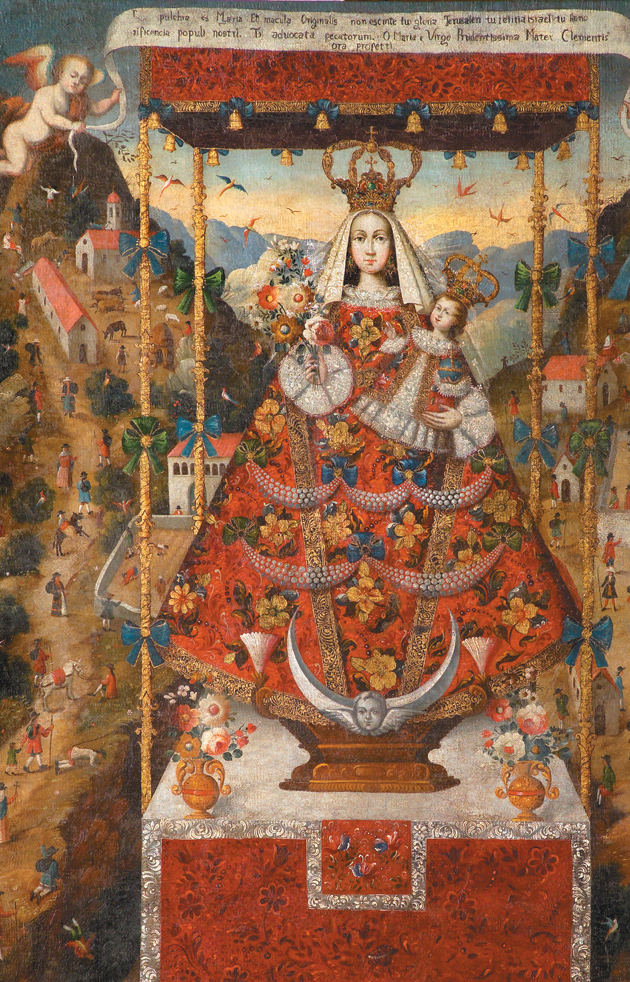Soon after disembarking on the Gulf coast of Mexico in February 1519, Hernán Cortés met with ambassadors of the Aztec emperor Moctezuma. The diplomatic gifts that they gave him—which included a heavy gold disk as big as a cartwheel, a massive silver circle, and enough gold pellets to fill up a conquistador’s helmet—hinted at the immense treasures that lay farther inland. Spaniards had at long last reached a region whose riches matched their ambitions.
Ignoring his orders to explore and trade but not colonize, Cortés ventured inland toward the great Aztec imperial capital of Tenochtitlan. As the captain and his men moved toward Tenochtitlan—in the site of present-day Mexico City—they fought groups that opposed them and made strategic alliances with tribes weary of Aztec dominance, most notably the Tlaxcalans, who after first fighting against Cortés soon gave military assistance that would prove decisive in the battle for control over the Aztec capital.
Cortés and his men arrived in Tenochtitlan bearing arms and crosses. Moctezuma greeted the Spanish forces hospitably, hosting them in his palace. A week later he was in chains, and seven months after that he lay dead—we do not know whether at the hands of his Spanish captors or of discontent Aztecs, since the many historical accounts written about the Spanish conquest of Mexico disagree on this crucial point. Soon, all-out war broke out. Between June 1520 and August 1521, Aztec warriors battled the Spanish forces and their Indian allies. Smallpox, a disease that Europeans brought to the Americas, ravaged the native population. The war for Tenochtitlan culminated with a devastating three-month siege during which the island city received no food, drinking water, or supplies from the outside.
Indigenous sources compiled decades later tell of many people dying of dysentery after drinking dirty water and others so desperately starved that they resorted to eating lizards, wood, plaster, boiled leather, and ground adobe bricks from destroyed buildings.1 On August 13, 1521, Cortés took control of Tenochtitlan in the name of the Spanish king. The once-magnificent metropolis, which awestruck Spaniards had compared to an American Venice and exalted for its grandeur, lay in rubble. The defeated Aztecs were forced to become laborers, using the materials of their former buildings to construct Mexico City, the capital of the Spanish Viceroyalty of New Spain.
This Issue
February 9, 2012
The Wrong Leonardo?
Václav Havel (1936–2011)
The Republican Nightmare
-
1
Stuart Schwartz, Victors and Vanquished: Spanish and Nahua Views of the Conquest of Mexico (Bedford/St. Martin’s, 2000). ↩
-
2
Serge Gruzinski, Images at War: Mexico from Columbus to Blade Runner (1492–2019) (Duke University Press, 2001). ↩
-
3
The manuscript is held in the Copenhagen Royal Library. A digital facsimile of the entire work, with a transcription, is available online at the Guaman Poma Website, www.kb.dk/permalink/2006/poma/info/en/front page.htm. ↩






